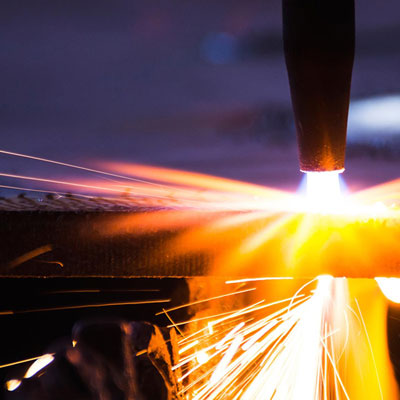We are dedicated to developing breakthrough technologies in partnership with industry. The capability spans industrial robotics, automation and human factors in automation.
We are part of the EPSRC Centre in Intelligent Automation, a collaboration between Loughborough and Cranfield universities, the Centre is funded by EPSRC and Industry and is developing advanced automation strategies and techniques.
Our focus is on human collaborative automation and skill capture, as well as conventional industrial automation, to develop much closer synergies between manual and automated manufacturing systems. The capability is operated in close collaboration with the Industrial Human Factors capability to ensure an optimal integration of people and automation.
Our core expertise is in the application of automation to the assembly of large structures. Another important research area is the development of human and robot collaborative applications, including the regulatory and safety aspects, and the capture and classification of skill for automation.
The work is industry-facing and works between TRL1 and TRL6, and the University has experience of developing near shop floor solutions. Engagements range from short-term feasibility studies to long-term secondments of staff into industry.
We have active collaborative research with industrial partners to develop new manufacturing systems and methods. We can work simply as subcontractors or as direct partners developing and agreeing research activities. We have experience of managing internal company research programmes through staff secondments.We also work with partners in joint externally funded activities.
Our expertise covers:
-
Advanced Industrial Automation;
-
Automated assembly of large structures;
-
Automated sealant application;
-
Distributed control of complex automated systems;
-
Metrology enabled assembly;
-
Skills capture for automation.
We work with the leading aerospace companies including Aero-Engine Controls, Airbus, BAE Systems and Rolls-Royce.
The University also has links in this area to HVM catapults (MTC and AMRC).
About our research
Core expertise is in the application of automation to the assembly of large structures.
Another important research area is the development of human and robot collaborative applications, including the regulatory and safety aspects, and the capture and classification of skill for automation.
The work is industry facing and works between TRL1 and TRL6 and the University has experience of developing near shop floor solutions. Engagements range from short-term feasibility studies to long-term secondments of staff into industry.
Recent examples of research are:
• automated sealant application
• the development of new, more automated aircraft assembly technologies in collaboration with Airbus
• assessment of the likely applications of robotics and automation for a BAE System’s facility.
Our facilities
Our facilities include:
• Well-equipped laboratories with a range of industrial robots and large and small volume metrology systems that can be configured into individual and collaborative cells
• Comprehensive suite of industrial safety systems supporting research into industrial automation safety
• Physical elements supported by software resources allowing many research solutions to be investigated virtually
• Aero-structure Assembly and Systems Installation Laboratory - a unique facility for research into Industrial Automation and the assembly of airframe and aero-engine structures. The focus of which is a full-scale wing assembly jig allowing large-scale assembly trials to be completed.
Working with us
We have active collaborative research with industrial partners to develop new manufacturing systems and methods. We can work simply as subcontractors or as direct partners developing and agreeing research activities. We have experience of managing internal company research programmes through staff secondments.We also work with partners in joint externally funded activities.
Our expertise covers:
• Advanced Industrial Automation
• Automated assembly of large structures
• Automated sealant application
• Distributed control of complex automated systems
• Metrology enabled assembly
• Skills capture for automation.
